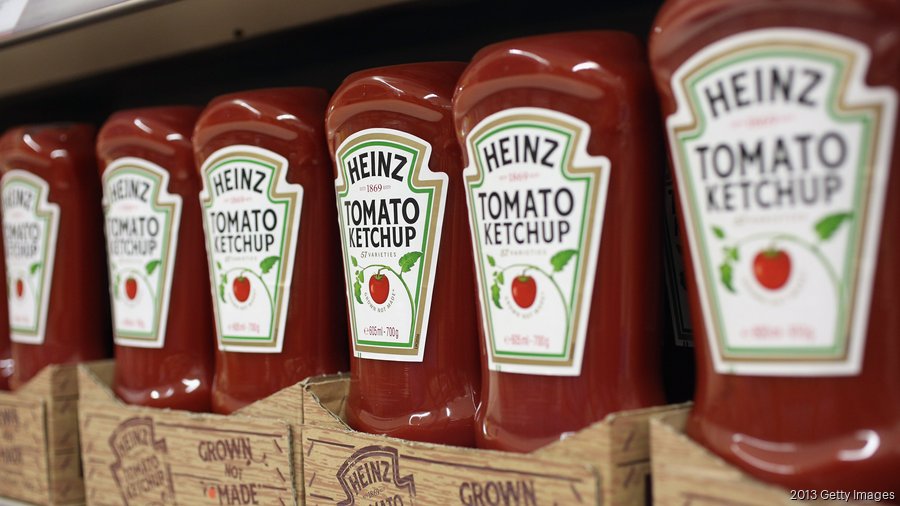Kraft Heinz, one of the world’s largest food and beverage conglomerates, has revealed a major restructuring plan that will see the company divide into two separate entities. The decision marks a significant shift in strategy for the iconic brand, signaling an effort to streamline operations, focus on core strengths, and respond to evolving consumer preferences in a highly competitive market. Analysts and industry observers are closely monitoring the move, which is expected to have wide-ranging implications for shareholders, employees, and the global food industry.
The planned split will result in two independent companies, each with its own management team, operational structure, and market focus. One entity will concentrate on the company’s iconic global food brands, which include household names in condiments, packaged meals, and pantry staples. The other will focus on snacks and convenience foods, a sector that has experienced rapid growth due to changing consumer habits and increasing demand for on-the-go products. By creating specialized entities, Kraft Heinz aims to better align resources with market opportunities and accelerate innovation within each segment.
Executives at Kraft Heinz have emphasized that the separation is designed to enhance agility and strategic clarity. “By dividing into two focused companies, we can respond more effectively to consumer trends, streamline decision-making, and create value for shareholders,” stated a company spokesperson. The split is also intended to allow each business to pursue tailored growth strategies, allocate capital more efficiently, and establish a distinct identity in an increasingly crowded marketplace.
El cambio se produce en un momento de transformación considerable en la industria alimentaria mundial. Las preferencias de los consumidores hacia opciones más saludables, alternativas basadas en plantas y empaques sostenibles han presionado a las empresas de alimentos envasados tradicionales para que innoven. Kraft Heinz ha enfrentado dificultades en años recientes, incluyendo patrones de compra cambiantes, interrupciones en la cadena de suministro y competencia creciente tanto de grandes compañías multinacionales como de ágiles empresas emergentes. Se considera que la reestructuración es un paso proactivo para abordar estas dificultades mientras posiciona a la marca para un crecimiento a largo plazo.
Financial analysts note that the split could unlock substantial shareholder value by allowing investors to target specific market segments with greater precision. The creation of two publicly traded companies could attract interest from different types of investors, depending on their appetite for stable, legacy food brands versus high-growth snack and convenience products. Market watchers anticipate that each entity will develop distinct investment profiles, operational metrics, and performance targets, making it easier for stakeholders to evaluate potential returns.
Experts in the field additionally highlight the operational advantages of the division. By concentrating on individual business units, Kraft Heinz can simplify supply chains, enhance production methods, and cut down overlapping administrative expenses. This boost in efficiency could lead to higher profitability, liberate resources for research and innovation, and increase the pace at which new products launch. Moreover, distinct management groups can seek strategic alliances, acquisitions, and market growth that suit the specific requirements of their distinct segments.
The news has elicited varied responses from investors and market analysts. Some perceive this as a daring and essential action to rejuvenate the company, whereas others warn that undertaking a corporate division of this magnitude carries risks, such as possible operational disruptions, employee doubts, and transitional expenses. Experts emphasize that meticulous planning and effective communication are vital to facilitate a seamless transition and sustain trust among shareholders, workers, and customers.
From a buyer’s viewpoint, the reorganization is not expected to bring about immediate modifications to the items on retail shelves. Yet, in the long run, each enterprise might adopt various marketing tactics, product advancements, and packaging methodologies. For instance, the snack-centered company could focus on smaller, portable sizes, more nutritious ingredient alternatives, and unique, seasonal flavors, whereas the traditional food brands firm might aim to enhance key products, broaden global presence, and bolster brand loyalty among conventional customers.
Experts note that the move could influence competitive dynamics within the food sector. Competitors may reassess their own strategies in response, considering similar structural adjustments or focusing on niche growth areas to capture market share. Moreover, suppliers, distributors, and retail partners will closely monitor the transition to anticipate changes in procurement, logistics, and promotional strategies. The split has the potential to reshape business relationships across the food supply chain, with ripple effects extending to retailers and consumers worldwide.
The announcement’s timing coincides with Kraft Heinz’s overarching plan for enduring sustainability and adaptability to market changes. The two new organizations are anticipated to focus on efforts that align with changing consumer demands, such as clear labeling, sustainable sourcing, and eco-friendly packaging. By establishing distinct companies, each leadership group can focus on executing sustainability strategies that best suit their specific products and customers, boosting brand image and fulfilling legal standards.
En cuanto a la gobernanza corporativa, la separación implicará la creación de juntas independientes, liderazgos ejecutivos, y sistemas de informes financieros para cada empresa. Esta estructura permite una rendición de cuentas más clara, evaluaciones de desempeño más específicas, y una planificación estratégica más enfocada. Es probable que los inversionistas valoren la transparencia y claridad que proporcionan los informes separados, lo que puede mejorar la toma de decisiones y respaldar los objetivos de crecimiento a largo plazo.
The decision has consequences for managing personnel. Staff members might experience changes in their positions, arrangements, or responsibilities as both organizations shape their operational plans. Human resources will play an essential part in facilitating seamless changes, sustaining employee morale, and matching skills with strategic goals. Each company is anticipated to provide avenues for career advancement and focus within their fields, encouraging creativity and keeping leading talent.
Global investors have shown significant interest, as the split might offer opportunities for focused investments in various sectors of the food industry. One organization may draw conservative investors looking for steady returns from established brands, while the snack and convenience company could attract those seeking high-growth, trend-focused areas. This range of investment possibilities highlights the changing landscape of the packaged food market and investor choices.
The division between the companies is anticipated to impact strategies related to marketing and branding. Each firm will have the freedom to design personalized campaigns, adjust product selections, and connect directly with particular consumer groups. Focused advertising, online interaction, and narrative branding are expected to be key parts of each firm’s strategy, enabling more successful market entry and distinguishing their brands.
Analysts predict that the restructuring could set a precedent for other multinational food companies grappling with similar challenges. By strategically dividing operations, Kraft Heinz demonstrates a willingness to adapt to market pressures, innovate, and prioritize consumer needs. Observers note that such a move reflects a broader industry shift toward more agile, focused, and responsive corporate structures.
Kraft Heinz’s choice to divide into two distinct entities marks a significant point in its corporate journey. By segregating its traditional food products from its fast-expanding snack and convenience section, the company seeks to enhance its focus, streamline operations, and more effectively address the changing demands of consumers and stakeholders. Although the transition will present hurdles, such as operational changes, staff reorganization, and market unpredictability, the long-term prospective advantages are considerable. This strategic decision places Kraft Heinz in a position to tackle the challenges of the contemporary food sector while promoting innovation, flexibility, and enduring growth for the future.





